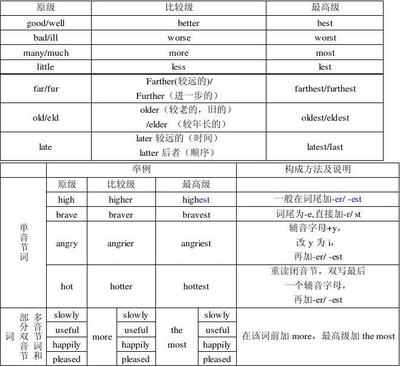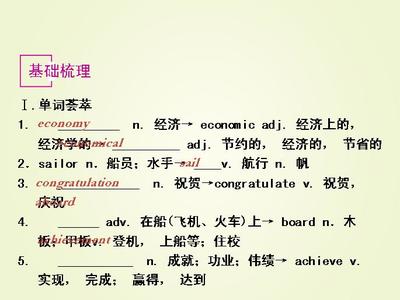代词
一、代词的定义、分类
代词是用来指代名词、形容词、数词的词。代词在句中可作主语、宾语、表语或定语。
二、代词的分类
在英语中,代词可分为人称代词、物主代词、反身代词、指示代词、疑问代词、相互代词、连接代词、关系代词和不定代词九大类。
代词在英语中使用极为广泛,它的使用可以使句子显得简洁明快,但若使用不当也容易造成理解上的偏差。
三、人称代词
表示“你、我、他(她、它)”,“你们、我们、他们(她们、它们)”的词称为人称代词。它有人称、数和格的变化。1.人称代词的一般用法
1).人称代词作主语(使用主格)
I like English and maths verymuch.我非常喜欢英语和数学。
She reads English words everymorning.她每天早晨读英语单词。
You are my goodfrien D.你是我的好朋友。
They don ' t talk in class.他们上课不讲话。
You, she and I are all goodat playing football.你、我和她都擅长踢足球。
2).人称代词作宾语(使用宾格)
Miss Mily teaches usdancing.米莉小姐教我们舞蹈。
Her grandma likes her verymuch.她的祖母很喜欢她。
I bought a fresh flower forher.我给她买了一束鲜花。
Mr Ma wants me to work outthe problem.马老师想让我解答这道题。
Don' t disturb them. They'rereading in the library.
别打扰他们。他们正在图书馆里读书。
#3)人称代词作表语(常用宾格形式)
—Who is there?谁在那儿?
—It's me.是我。
—Who is crying in the room?谁正在房间里哭?
—It's her.是她。
注意.介词后面只能跟人称代词的宾格作宾语,不能接主格。例如:
{ There is a desk between youand I.(误)
There is a desk between youand me.(正)
{ Here's a Christmas card forshe.(误)
Here's a Christmas card forher.(正)
2.特殊用法的人称代词
1)it的特殊用法
①it表示人以外的单数东西或动物,意为“它”。例如:
—Where's my bag?我的书包呢?
—It's over there.它在那儿。
—Could you find a bird in thepicture?
你能找到图中的一只小鸟吗?
—Yes, it's in the tree.能,它在树上。
②指代天气
How cold it was yesterday!昨天真冷啊!
—What's the weather liketoday? 今天天气如何?
—It's rainy.有雨。
③指代时间
—What's the time?几点了?
—It's seven o'clock.七点了。
④指代距离
—How far is it from here?离这儿多远?
—It's five minutes'walk.步行五分钟的路程。
⑤作形式主语
It's good to take enoughexercise. 多锻炼有好处。
It's better to do everythingcarefully.做事认真比较好。
⑥作形式宾语
He found it very interestingto be on Internet.他发现上网很有趣。
I found it very hard to geton with her.我发觉与她相处很难。
She finds it necessary to getup early in the morning. 她发现早上早起床很有必要。
2).she的特殊用法
she除了指女性外,还可以用来指国家、月亮、大地、船只等自然界的东西。例如:
The moon is shining brightlytonight. She looks like a round plate.
今晚的月光很明亮,她好像一个大圆盘一样。
China is mymotherlan D. I'll love herforever.中国是我的祖国。我将永远爱她。
3).we, you,they的特殊用法
we, you,they有时并非指特定的人,翻译时不必译出来。例如:
We had a heavy snowyesterday.昨天下了一场大雪。
You don't grow any cropshere.这儿,人们不种庄稼。
They speak Chinese inChina.在中国,人们说汉语。
3.人称代词的排列顺序
英语中,当说话者(I或we)提到自己和别人时,习惯上常把自己摆在最后一个位置,以表示谦虚和礼貌。例如:
You, she and I passed theexam.我、你和她都通过了考试。
在承认错误或自我批评时,说话者有时也把自己居于其他人称之前。例如:
I and he are to blame.我和他都要受批评。
You andI是固定结构,即使在承认错误时,词序也不变化。例如:
You and I are to blame.我和你都要受批评。
二、物主代词
物主代词表示所有关系,又叫做代词所有格。物主代词有两种形式,一种是形容词性物主代词,在句中只能充当定语;另一种是名词性物主代词,在句中可以作主语、宾语、表语等。物主代词有人称、数的变化。
1.名词性物主代词的用法
名词性物主代词具有名词的特征,在句子中可以作主语、表语、宾语。它还可以构成“a/an/ this/ that/some/no+名词+of+名词性物主代词”句型,在这个句型中,名词性物主代词在句子中作定语,表示部分与整体的关系,例如:
A friend of mine has gone toAmerica.我的一个朋友去美国了。
That dress of hers looksbeautiful.她的那条裙子很漂亮。
Some books of ours are veryinteresting.我们的一些书很有趣。
1).作主语
His bike is black. Mine isblue.他的自行车是黑色的。我的是蓝色的。
Our country is great, andtheirs are also great.我们的国家很大,他们的也很大。
This isn't my watch. Mine isin my pocket.这不是我的手表。我的在衣袋里。
2).作表语
—Whose football isthis?这是谁的足球?
—It's his.是他的。
—Is that model planeyours?你这个模型飞机是你的吗?
—No,its hers.不,是她的。
That hat on the desk is notmine. It's yours.桌子上的帽子不是我的。是你的。
3).作宾语
Don't help me with mycleaning. Clean yours.别帮助我打扫卫生了,扫你的吧。
I have finished my homework.Have you finished yours?我已经完成了我的作业。你完成你的了吗?
Please use your own pen.Don't use mine.请你用自己的钢笔。别用我的。
4).用于“of”结构中作定语
That car of hers is veryexpensive.她的那辆车很贵。
This painting of his is wellsold.他的这幅画卖得很好。
Tom's father is a closefriend of mine.汤姆的父亲是我的一个亲密朋友。
2.形容词性物主代词的用法
形容词性物主代词具有形容词的特征,在句子中用作定语,后接名词。例如:
My teacher is going to visitour home.我的老师将要到我家家访。
Her new trousers are verybeautiful.她的新裤子很漂亮。
This isn't my idea, and it'sher idea.这不是我的主意,是她的主意。
注意.
形容词性物主代词的前后均不可再接定冠词the。例如:
{ This is my the redumbrella. (误)
This is my red umbrella.(正)
{ That is the her new clock.(误)
That is her new clock.(正)
3.名词性物主代词和形容词性物主代词的用法区别
形容词性物主代词的后面必须加名词才能在句中使用;而名词性物主代词后面绝对不能再加名词了,这一点应切记。例如:
Thisisyourpicture这是你的图画。
名词
形容词性物主代词(your后面必须加名词)
Thoseballsaren't theirs.那些球不是他们的。
名词 名词性物主代词(theirs后面绝不能再加名词)
{ That one is not minebanana. (误)
That one is not mine.(正)
注意. 冠词a(an, the)和this, that,some, no等词后不能再用所有格或物主代词。 例如:
{a my book(误)
an herbike(误)
{ the yourdesk(误)
some theirbabies(误)
三、指示代词
表示“这个”、“那个”、“这些”、“那些”等指代概念的代词叫指示代词。
指示代词有this, that, these,those等。this(复数形式是these)指时间或空间上较近的人或物;that(复数形式是those)指时间或空间上较远的人或物。
1.指示代词的基本用法
指示代词在句子中可用作主语、表语、宾语或定语。
1).作主语
This is a robot.这是一个机器人。
That is an old computer.那是一台旧电脑。
These are our new books.这些是我们的新书。
Those are yellow taxies.那些是黄色的出租车。
2).作表语
What the girl wants is that.那就是那个女孩想要的。
The pen he is looking for isthis.这就是他正在找的钢笔。
What the boys want to buy arethose.男孩子们想买的就是这些。
What I'd like to choose arethese.我想选的就是这些。
3).作宾语
If you do that, you'llsucceed.如果你那样做,你将会成功。
Don't do this, it's bad foryour eyes.别这样做,它对你的眼睛有害。
I like those, because theyare helpful.我喜欢那些,因为它们有益。
Eat these. They tastedelicious.吃这些吧。它们味道鲜美。
4).作定语
This room is Lucy andLily's.这个房间是露茜和莉莉的。
That banana is green.那个香蕉是绿色的。
These children are watching amatch. 这些孩子们正在观看比赛。
Those songs are for oldpeople.那些歌是为老年人写的。
2.指示代词的特殊用法
1).this和that在对话中常用it来代替;these和those则常用they或them来替代。例如:
—What's this?这是什么?
—It's a Japanse car.一辆日本轿车。
—What are those?那些是什么?
—They are boats.小船。
These are our tools. Pleaseput them away.
这些是我们的工具。请把它们收好。
The weather in the north iscolder than that of the south in winter.
冬季北方的气候比南方的冷。
2).that和those代替前面提到过的名词,但this和these不行。例如:
The population of China islarger than this of Canada.(误)
The population of China islarger than that of Canada.(正)
The computers made in Chinaare as good as these made in Japan.(误)
The computers made in Chinaare as good as those made in Japan. (正)
3).this和that有时可以当副词用,表示程度,相当于so。例如:
The young man can't speakthat well.那个年轻人说不那么好。
I can also play games thiswonderfully.我也能够做游戏做得这么精彩。
4).that或those可以代替前面句子或句子中的某一部分。例如:
You are late again. That'sterrible. 你又迟到了,那太可怕了。(that作主语代替前面的整个句子)
You mean you don't haveenough money. That 's a bigproblem.你的意思是说你的钱不够。那是个大问题。(that代替前面的you don't have enoughmoney)
5).this和these常指后面要讲到的事物,有启下的作用。例如:
What I want to tell you isthis:You have won the relay race.我想告诉你的是这么一件事:你们接力赛赢了。(this指代下面一整句话)
四、相互代词与反身代词
1.反身代词
表示“我自己”、“你自己”、“他(她/它)自己”,“我们自己”、“你们自己”、“他(她/它)们自己”等的词叫反身代词,也叫自身代词。它表示一个动作回到该动作的执行者本身,或者强调自己。它有人称和数的变化。
1).反身代词的基本用法是在句子中作宾语或表语。例如:
Did you enjoy yourself lastnight? (作宾语)昨天晚上你玩得高兴吗?
Make yourselves at home,please. (作宾语)别客气,就像在家里一样。
Tom will be himself again ina few minutes. (作表语)汤姆过会儿就会好。
2).反身代词有时作主语或宾语的同位语,用来加强语气,表示“本人”或“亲自”。例如:
Mr Wang wants to learn aforeign language himself.
王先生想学一门外语。
The drawing was drawn byMike’s sisterherself.
这幅素描是迈克的妹妹自己画的。
You’dbetter borrow the bookyourself.
你最好亲自去借这本书。
3).反身代词常用于某些固定搭配中。例如:
all by oneself独自 learn byoneself 自学
think to oneself暗暗地想
say to oneself自言自语
leave one by oneself把某人单独留下
teach oneself自学
2.相互代词
英语中,表示相互关系的代词叫相互代词。共有两对:eachother与one another。each other通常指两者之间的“相互”,而oneanother则用来表示两个以上的人或事物的相互关系。相互代词在句子中作宾语,其所有格形式在句子中作定语。例如:
As friends, we should helpeach other. 作为朋友,我们应该互相帮助。(作宾语)
You mustnt talk to eachother in class. 不许在课堂上互相说话。(作宾语)
Look! They are passing theball one another. 看他们在互相传球。(作宾语)
Let’scorrect each other’s ‘mistakes.我们互相改正错误吧。(作定语)
They know eachother’s favourite.他们互相了解对方的优点。(作定语)
五、不定代词
不具体指明代替任何特殊名词或形容词的代词叫不定代词。不定代词一般代替名词和形容词,在句子中作主语、宾语、表语或定语。
常见的不定代词有:all, each, every,both, either, neither, one, none, (a)little, (a) few, many, much,other, another, some, any, no,以及由some, any, no和every与body, one,thing构成的合成不定代词。
1.one,ones的用法
1).one可用作代词,代替前面已经出现过的单数可数名词,以避免重复。若无定语修饰,one不带冠词;若有定语修饰,one就必须带冠词。
— Which bike is yours,Mike?迈克,哪一辆自行车是你的?
—You can buy one in theschool shop.你可以在学校的商店里买一个。
We like that one, the onewith four pockets.我们喜欢那一件,那一件有四个衣袋。
2).ones一般代替复数可数名词(也可以用those)。例如:
These books are mine andthose(ones) are mybrother’s.这些书是我的,而那些书是我哥哥的。
I have several new colourpencils and some old ones.我有一些新的彩色铅笔和一些旧的彩色铅笔。
那些。
注意.
it和one都可以代替前面提到的名词,但it代替的是前面提到那件特指的事物;而one所替代的是前面提到的同类事物,但不是同一件。例如:
The chair is in the middle ofthe room, please move it away. (代替前面的chair)
She bought a newspaper andgave it to me. (代替前面的a newspaper)
If you need a pen, I canprovide one. (指同类的东西)
This is a big orange, butI’dlike a smaller one.(指同类的东西)
2.some,any的用法
1).some,any都是表示不定数量的代词,都可以作主语、宾语和定语。后面可以跟可数名词的复数或不可数名词,意为“一些”。some一般用于肯定句,any用于否定句、疑问句和条件状语从句。但表建议请求的疑问句中用some。例如:
The boy asked the teachersome questions.
这个孩子问了老师一些问题。
Have you any paper?你有纸吗?
Would you like somecoffee?你想要点咖啡吗?
2).some,any与thing,body,one构成的合成不定代词的用法与some, any一样。例如:
Let’shave something English to eattoday.我们今天吃点英式风味的东西吧。
There’ssomething wrong withyour foot.你的脚有点毛病。
注意. something, anything,nothing等复合不定代词被修饰语修饰时,修饰语应后置。 例如:
something interesting有趣的事情nothing new 没有新的东西
anything important重要的事情something useful 有用的东西something to eat一些吃的东西
3).在否定句中,some表示半否定,any表示全否定。例如:
Idon’tknow some of the newwords. (我不全认识那些生词) 我只认识其中的部分生词。
Shedoesn’tknow any of the newwords. (一个生词也不认识) 这些生词她一个也不认识。
3.many,much的用法
1) many,much均表示“许多”。many修饰可数名词,much修饰不可数名词。例如:
Many students are watching afootball match.许多学生正在观看足球赛。
Much work needs to be donetoday.今天有大量工作需要做。
2)many,much在句中可以作主语、宾语、定语,有时也可以作状语,主要用于否定句及疑问句中(在肯定句中多用a lot of, lots of,plenty of)。例如:
Many of the children likeplaying games.许多孩子喜欢做游戏。(主语)
They don’t have much milk tosend today.今天他们设有许多牛奶要送。(定语)
In much of China, is springusually very short?在中国的大部分地区,春季通常很短吗?(介词宾语)
3)much可以修饰形容词或副词的比较级。例如:
You look much better todaythan yesterday.你今天看上去比昨天好多了。
She likes maths much betterthan physi. 物理与数学相比,她更喜欢数学。
4)many、much可以后接more,manymore代替或修饰可数名词复数,much more后接不可数名词。例如:
Li Lin has many more booksthan I.李林比我拥有更多的书。
5)“manya(an)+名词单数”与“many+名词复数”意义相同。例如:
Many a young man comes herefor a swimming.= Many young men come here for aswimming.
许多青年人来这儿旅游。
Many a fi is veryinteresting.=Many fis are veryinteresting.许多电影很有趣
4.both,all的用法
1)all代表或修饰三个或三个以上的人或物,也可代表或修饰不可数名词,在句中用作主语、表语、宾语、同位语或定语。例如:
All are workinghard.所有的人都正在努力学习。(主语)
What I want to say isall.我想说的话就这些。(表语)
He told me all aboutit.他把一切都告诉了我。(宾语)
All the apples on the treegrow big.树上所有的苹果都长大了。(定语)
Mr Chen knows usall.陈先生认识我们大家。(同位语)
注意.all修饰单数名词,表示“全”、“总”、“整”。例如:
Our boss works allday.我们老板整天工作。
all作主语时,如果后跟人称代词,必须在all后加上of;如果后跟名词,既可以加上of,也可以不加。例如:
All of us are fromChina.我们都来自中国。
当all作同位语时,它在句中位置随谓语动词而定,应置于系动词之后,实义动词之前。 例如:
They all worry aboutyou.他们都很担心你。
We are all footballplayers.我们都是足球队员。
all用作人称代词宾语的同位语时,all应放在宾语后面。例如:
Happy New Year to youall.祝你们大家新年快乐。
I'll have to copy themall.我将不得不把它们全部抄下来。
2).both代表或修饰两个人或物,在句中用作主语、宾语、同位语或定语。可构成“both…and”结构,表示“两者都……”。例如:
My twin sisters are bothfifteen years old.我的两个双胞胎姐姐都15岁了。
Both of them are good atEnglish.他们两个人都擅长英语。
5.neither,either的用法
1).共同点
两者都可以用作主语、宾语和定语。neither和either在句中作主语时,谓语动词必须用单数形式;作定语时,其后名词均用单数。例如:
There are many shops oneither side of the road.马路的两边都有许多商店。(定语)
Neither of my parents hascome yet.我父母都还没回来。(主语)
—Which one do you likebetter? 你更喜欢哪一个?
—Either is OK.哪一个都行。(主语)
注意.
either也可以用作副词,意为“也”,用于否定句的句末。例如:
You are not good at maths,I'm not either. 你的数学不好,我的数学也不好。
Youcan’tskate well, Ican’teither.你不会滑冰,我也不会。
2).不同点
neither表示否定含义,可构成“neither…nor”的句型;either表示“两人或物中的任何一个”,表示肯定意义,可构成“eitheror”句型。例如:
Neither my sister nor mybrother likes dancing.我哥哥和姐姐都不喜欢舞蹈。
Neither my parents nor I wasat home yesterday.我和我父母昨天都不在家。
6.none, noone的用法
1).none表示“(三者或三者以上)一个也没有”。none用作名词时,在句中一般作主语和宾语;none代替可数名词作主语时,谓语动词既可以用单数也可以用复数;none代替不可数名词作主语时,谓语动词用单数。例如:
None of the stories (is)areinstructive. 没有一个故事有教育意义。
None of the students are(is)late today.今天没有一个学生迟到。
2).noone(=nobody)指人,意为“没有人”、“无人”,作主语时,其谓语动词永远用单数。例如:
No one knows you here exceptme.在这儿除了我没有人认识你。
No one likes staying at sucha place.没有人喜欢呆在这样一个地方。
No one seems to be in ahurry. 好像没有人着急。
3).在回答how many或howmuch引出的问题时,用none来表达“一个也没有”;而在回答who引出的问句时,如表示“没有人”,用noone来回答。例如:
— How many birds are there inthe tree?树上有几只鸟?
—None.一只也没有。
— How much water do you havein the cup?你那个杯子里有多少水?
7.other,another的用法
1) another(=another)表示“别的;另一个”。泛指众多中的另一个,作定语时一般后面接单数名词,有时也可指几个,another的前面不能用the。例如:
Would you like anotherbanana?你还要一个香蕉吗?
The ball goes from one boy toanother.球从一个男孩传给另一个男孩。
2).theother表示两个中的“另一个(常用于one…,the other…)”。例如:
She has two radios,one isnew, the other is olD.她有两台收音机,一台是新的,另一台是旧的。
Only two bikes left. One isyours, the other isMike’s.只剩下两辆自行车了。一辆是你的,另外一辆是迈克的。
注意.有时another可以用在复数名词前,构成“another+基数词+名词”结构,表示“又、再”。例如:
I’dlike another twocakes.我想再要两块蛋糕。
In another ten days, we’llleave for Xin jiang. 再过十天,我们将出发去新疆。
We have another three jobs todo today.今天我们还有三件工作要做。
3)other,others(=other+名词)“别的,其他的”。可以构成“some,others”结构,意为“一些……,另外一些……”。例如:
Some are playing basketball,others are running.一些人在打篮球,一些人在跑步。
Some people went to thecinema, others stayed at home.一些人去看电影,一些人呆在家里。
4)the others(=theother+名词)“其余的”(=the rest)。例如:
There are three children inhis family. One is a girl, the others are boys.
他家里有三个孩子。一个是女孩,其余的是男孩。
注意.有时在比较级的句子中,用“any+other+单数名词”来限定比较对象,使意义更加明显。 例如:
Shanghai is larger than anyother city in China. 上海比中国的其他任何一个城市都更大。
Li Tao is taller than anyother boy in his class. 李涛比他班上的其他任何一个男孩都高。
8.little, a little, few, afew的用法
1)little, alittle用来代替或修饰不可数名词;little表示“不多”、“几乎没有”,在意义上是否定的。alittle表示“虽少但还有一些”、“一点儿”,在意义上是肯定的。例如:There is a little water in theriver.
河里有少量的水。
There is little food in thefridge.冰箱里几乎没有食物了。
Here’sa little milk for you. 给你一些牛奶。
注意. ①alittle除了代替或修饰不可数名词以外,还能修饰动词、形容词(副词)或形容词(副词)的比较级。例如:
This one is a little cheaperthan that one.这个比那个便宜一点。
It is a little warmertoday.今天天气更暖和一点儿。
②little表示否定意义。含有little的句子在变反意疑问句时,注意其后的附加疑问句要用肯定形式。例如:
There is little oil in mymotor bike, is there?我摩托车里没什么油了,是吧?
You have little money, doyou?你没什么钱了,是吧?
③not alittle表示“很,非常”之意。例如:
After a long walk, we werenot a little tireD.长途跋涉之后,我们都累极了。
Don’tworry. We have not alittle time. 别着急。我们还剩下很多时间。
There’snot a little water in the river in this season.在这个季节,河里的水很多。
2)few, a few用来代替或修饰可数名词,afew表示“一些,少数几个”,有肯定意义;few表示“几乎没有,极少”,有否定意义。在句子中作主语、宾语和定语。例如:
There are a few flowers herein the early spring.在早春这儿有一些花。
She has a few importantthings to do.她有几件重要的事情要做。
注意.
①few本身具有否定意义,含有few的句子在变为反意疑问句时,其后的附加疑问句要用肯定形式。 例如:
There are few apples in thebox, are there?盒子里几乎没有苹果,是吧?
You have few questions now,do you?你几乎没有问题了,是吧?
②not a few等于“quite afew(=many)”,表示“很多”,修饰可数名词复数。 例如:
There are not a few people inthe meeting room.会议室里人很多。
Not a few people are learningEnglish themselves.不少人现在正自学英语。
对比.{ not a bit=not atall表示“一点也不”。
not a little=very much表示“非常,很”。not a few=many表示“很多”。
9.each,every的用法
1)each通常强调个体,指有限的数目,尤其指两个中的每一个时,有时可用both代替;而every强调共性,指三个或三个以上的人或事物中的“每一个”,有时同all接近。例如:
There are young trees on eachside of the new street.这条新街道的两旁都是小树。
On every side of the lake,there is a forest.在湖的四周都是森林。
2).every只用作定语,用在单数名词前;而each具有形容词、代词和副词三种词性,在句中作定语、主语或状语,用作单数。例如:
Not every person likes thiskind of foo D.并非每个人都喜欢这种食品。(作定语)
Each worker is proud of thecompany. 每个工人都为公司感到骄傲。(作定语)
Each of us has onedictionary. 我们每个人都有一本词典。(作主语)
They planted a tree on thehill each. 他们每个人在山上栽了一棵树。(作状语)
10.no的用法
1).no用作不定代词时,只能作定语,意为“notany, not a(an)”。例如:
Time and tide wait for noman.岁月不等人。
There are no people in thepark now.现在公园里没有人。
2).no还可以用作副词,修饰形容词或副词的比较级,构成“no+形容词或副词的比较级+than”结构,意为“决不比……”。例如:
She is no thinner thanI.她决不比我瘦。(她和我一样胖)
Your maths is no better thanmine. 你的数学决不比我的好。(你的数学和我数学一样差)
He is no earlier than I.他决不比我早。(他和我一样晚) 
3).no可以用作语气词,来回答一般疑问句。例如:
— Do you enjoy watchingfootball games?你喜欢看足球赛吗?)
—No, I don’t .不,不喜欢。
11. 由some, any, no,every构成的复合不定代词的用法
some, any, no和every可以和one,body, thing构成复合代词,它们的用法与some, any的用法相同。例如:
nobody(没人) no one(没人)nothing(没有东西) somebody(某人) someone(某人)something(某事)
anybody(任何人) anyone(任何人)anything(任何事)
everybody(每个人)everyone(每个人) everything(每一件事)
Do you have anything to dotoday?你今天有事做吗?
I have nothing to say formyself.我没有什么替自己辩解的。
注意.everyone与everybody同义,只能指人;而everyone既可以指人,也可以指物,还可以和of短语连用。例如:
Everyone in our family doeshousework at home. 我们家每个人在家都应做家务。
The girl keeps every one ofher books clean. 这个女孩把每一本书都保持清洁。
Every one of us likes ourhead teacher very much. 我们每个人都很喜欢我们的班主任。
 爱华网
爱华网


